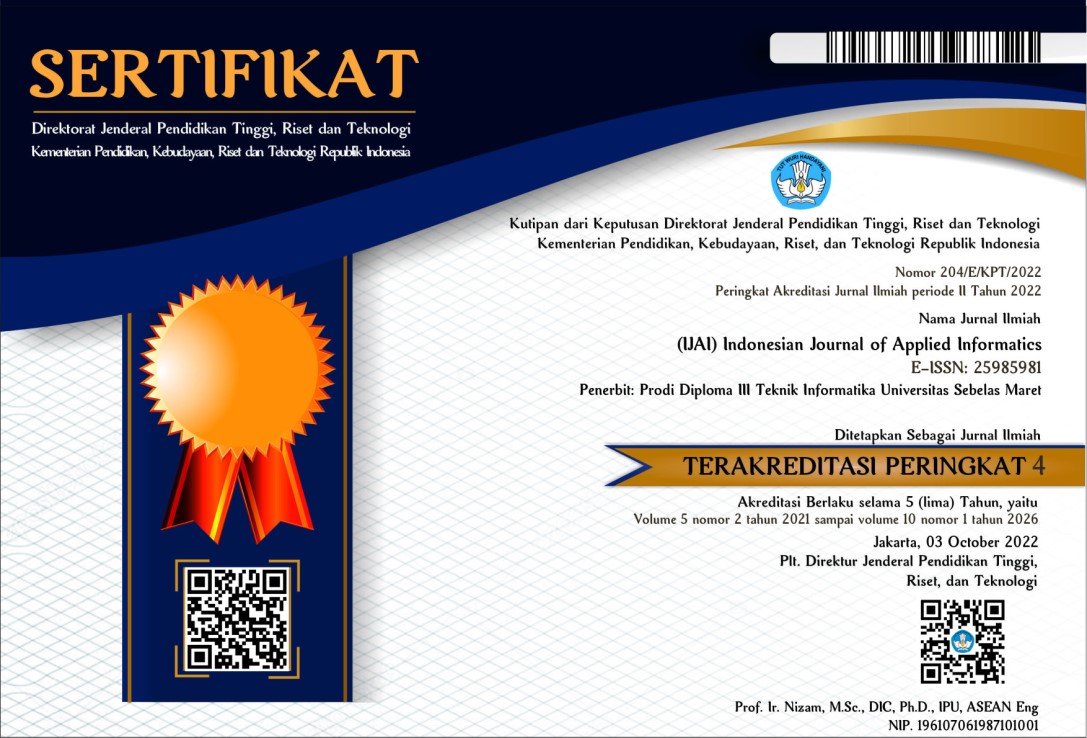Virtual Reality Exposure Therapy for Acrophobia: Designing a Game Application
Abstract
Abstract
Anxiety disorders are the most common type of mental disorder Almost 18.1% of adults experience anxiety disorders, with the specific phobia subcategory being understudied. Studies indicate that the prevalence of specific phobias ranges from 3% to 15% worldwide, with phobias of heights and animals being the most common. While exposure therapy for anxiety disorders has strong evidence, not many therapists use this method. In this study, we employed an exposure therapy method that involved gradual and repeated exposure to a feared stimulus, resulting in changes in cognition, behavior, and emotional and physical responses. The study developed the exposure therapy method as Virtual Reality Exposure Therapy (VRET), utilizing an interactive and engaging 3D environment to facilitate new learning and provide an immersive experience for users. The research also leveraged VRET technology to assist in training, evaluating, delivering, and supervising psychotherapy skills. Our study resulted in a prototype of VRET that offers a more specific and detailed therapeutic tool for acrophobia in the form of game. The compatibility test results show that the iPhone XR 2021 and Poco X3 Pro 2021 can build applications 5 minutes faster than the Poco M3 2021 and 15 minutes from the Realme 3 2021. The Poco X3 Pro 2021 application installation process is 1 to 2 seconds faster than the iPhone XR 2021 and Poco M3 2021. Realme 3 2021 is 9 seconds slower than Poco X3 Pro 2021.
Abstrak
Gangguan kecemasan adalah jenis gangguan mental yang paling umum. Hampir 18,1% orang dewasa mengalami gangguan kecemasan, dengan subkategori fobia spesifik sedang dipelajari. Studi menunjukkan bahwa prevalensi fobia spesifik berkisar antara 3% hingga 15% di seluruh dunia, dengan fobia ketinggian dan hewan adalah yang paling umum. Sementara terapi pemaparan untuk gangguan kecemasan memiliki bukti kuat, tidak banyak terapis yang menggunakan metode ini. Dalam penelitian ini, kami menggunakan metode terapi pemaparan yang melibatkan pemaparan bertahap dan berulang terhadap stimulus yang ditakuti, menghasilkan perubahan dalam kognisi, perilaku, dan respons emosional dan fisik. Studi ini mengembangkan metode terapi pemaparan sebagai Virtual Reality Exposure Therapy (VRET), menggabungkan lingkungan 3D yang interaktif dan menarik untuk memfasilitasi pembelajaran baru dan memberikan pengalaman mendalam bagi pengguna. Penelitian ini juga memanfaatkan teknologi VRET untuk membantu melatih, mengevaluasi, menyampaikan, dan mengawasi keterampilan psikoterapi. Studi kami menghasilkan prototipe VRET yang menawarkan alat terapi yang lebih spesifik dan terperinci untuk akrofobia dalam bentuk permainan. Hasil uji kompatibilitas menunjukkan bahwa iPhone XR 2021 dan Poco X3 Pro 2021 dapat membangun aplikasi 5 menit lebih cepat dari Poco M3 2021 dan 15 menit dari Realme 3 2021. Proses instalasi aplikasi Poco X3 Pro 2021 lebih cepat 1 hingga 2 detik dibandingkan iPhone XR 2021 dan Poco M3 2021. Realme 3 2021 lebih lambat 9 detik dari Poco X3 Pro 2021.
Keywords
Full Text:
PDFReferences
[1] R. C. Kessler, W. T. Chiu, O. Demler, and E. E. Walters, “Prevalence, Severity, and Comorbidity of 12-Month DSM-IV Disorders in the National Comorbidity Survey Replication,” ARCH GEN PSYCHIATRY, vol. 62, p. 12, 2005.
[2] W. W. Eaton, O. J. Bienvenu, and B. Miloyan, “Specific phobias,” The Lancet Psychiatry, vol. 5, no. 8, pp. 678–686, Aug. 2018, doi: 10.1016/S2215-0366(18)30169-X.
[3] A. J. Baxter, K. M. Scott, T. Vos, and H. A. Whiteford, “Global prevalence of anxiety disorders: a systematic review and meta-regression,” Psychol. Med., vol. 43, no. 5, pp. 897–910, May 2013, doi: 10.1017/S003329171200147X.
[4] K. M. Scott et al., “Depression–anxiety relationships with chronic physical conditions: Results from the World Mental Health surveys,” Journal of Affective Disorders, vol. 103, no. 1–3, pp. 113–120, Nov. 2007, doi: 10.1016/j.jad.2007.01.015.
[5] A. J. Baxter, T. Vos, K. M. Scott, A. J. Ferrari, and H. A. Whiteford, “The global burden of anxiety disorders in 2010,” Psychol. Med., vol. 44, no. 11, pp. 2363–2374, Aug. 2014, doi: 10.1017/S0033291713003243.
[6] “Prevalence, Severity, and Unmet Need for Treatment of Mental Disorders in the World Health Organization World Mental Health Surveys,” JAMA, vol. 291, no. 21, p. 2581, Jun. 2004, doi: 10.1001/jama.291.21.2581.
[7] E. A. Hembree, S. A. M. Rauch, and E. B. Foa, “Beyond the manual: The insider’s guide to Prolonged Exposure therapy for PTSD,” Cognitive and Behavioral Practice, vol. 10, no. 1, pp. 22–30, Dec. 2003, doi: 10.1016/S1077-7229(03)80005-6.
[8] D. M. Eric A. Storch, Handbook of Treating Variants and Complications in Anxiety Disorders. 2013.
[9] M. Davis and M. Powers, “Exposure Therapy for Anxiety: Principles and Practice,” Cognitive Behaviour Therapy, vol. 40, no. 4, pp. 315–315, Dec. 2011, doi: 10.1080/16506073.2011.609655.
[10] D. Ougrin, “Efficacy of exposure versus cognitive therapy in anxiety disorders: systematic review and meta-analysis,” BMC Psychiatry, vol. 11, no. 1, p. 200, Dec. 2011, doi: 10.1186/1471-244X-11-200.
[11] B. J. Deacon et al., “Assessing therapist reservations about exposure therapy for anxiety disorders: The Therapist Beliefs about Exposure Scale,” Journal of Anxiety Disorders, vol. 27, no. 8, pp. 772–780, Dec. 2013, doi: 10.1016/j.janxdis.2013.04.006.
[12] A. Pittig, R. Kotter, and J. Hoyer, “The Struggle of Behavioral Therapists With Exposure: Self-Reported Practicability, Negative Beliefs, and Therapist Distress About Exposure-Based Interventions,” Behavior Therapy, vol. 50, no. 2, pp. 353–366, Mar. 2019, doi: 10.1016/j.beth.2018.07.003.
[13] S. Grenier et al., “Using virtual reality to improve the efficacy of cognitive-behavioral therapy (CBT) in the treatment of late-life anxiety: preliminary recommendations for future research,” Int. Psychogeriatr., vol. 27, no. 7, pp. 1217–1225, Jul. 2015, doi: 10.1017/S1041610214002300.
[14] Z. E. Imel, D. D. Caperton, M. Tanana, and D. C. Atkins, “Technology-enhanced human interaction in psychotherapy.,” Journal of Counseling Psychology, vol. 64, no. 4, pp. 385–393, Jul. 2017, doi: 10.1037/cou0000213.
[15] S. W. Jerdan, M. Grindle, H. C. van Woerden, and M. N. Kamel Boulos, “Head-Mounted Virtual Reality and Mental Health: Critical Review of Current Research,” JMIR Serious Games, vol. 6, no. 3, p. e14, Jul. 2018, doi: 10.2196/games.9226.
[16] E. Carl et al., “Virtual reality exposure therapy for anxiety and related disorders: A meta-analysis of randomized controlled trials,” Journal of Anxiety Disorders, vol. 61, pp. 27–36, Jan. 2019, doi: 10.1016/j.janxdis.2018.08.003.
[17] Associate Chief of Staff, Mental Health, N. Cal. VA Health Care System, CA 95655, USA, D. M. Hilty, S. Chan, and Clinical Informatics Fellow, UC San Francisco, Division of Hospital Medicine, CA 94117, USA, “Human Behavior with Mobile Health: Smartphone/ Devices, Apps and Cognition,” Psychol Cogn Sci Open J, vol. 4, no. 2, pp. 36–47, Dec. 2018, doi: 10.17140/PCSOJ-4-141.
[18] A. A. Benbow and P. L. Anderson, “A meta-analytic examination of attrition in virtual reality exposure therapy for anxiety disorders,” Journal of Anxiety Disorders, vol. 61, pp. 18–26, Jan. 2019, doi: 10.1016/j.janxdis.2018.06.006.
[19] D. Vergara, M. Rubio, and M. Lorenzo, “On the Design of Virtual Reality Learning Environments in Engineering,” MTI, vol. 1, no. 2, p. 11, Jun. 2017, doi: 10.3390/mti1020011.
[20] S. Nidhra, “Black Box and White Box Testing Techniques - A Literature Review,” IJESA, vol. 2, no. 2, pp. 29–50, Jun. 2012, doi: 10.5121/ijesa.2012.2204.
Refbacks
- There are currently no refbacks.






